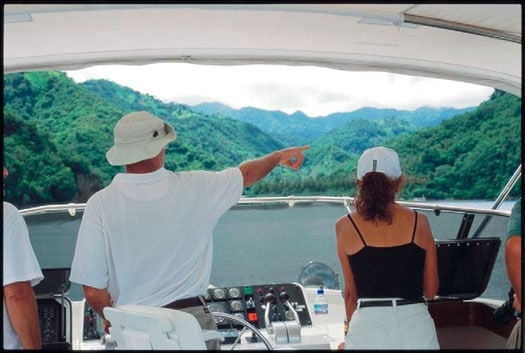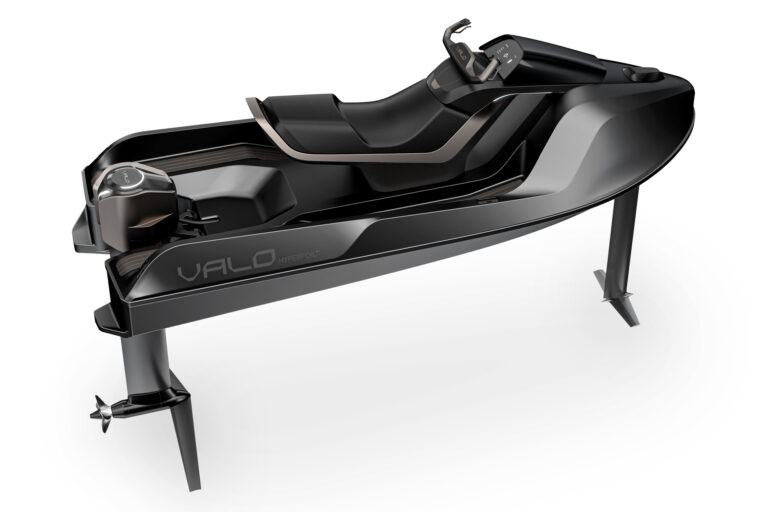
ytgjan09cyvoy525.jpg
As we saw in the November issue, Bridge Resource Management teaches professional mariners how to prepare for voyaging safely, limiting the opportunities for “human error” that are so often the cause of commercial accidents. Though the bridge on your yacht may be quite a bit smaller, and your “crew” may consist of just yourself and a first mate, there are valuable lessons recreational boaters can take from the world of commercial ships.
In the November issue, we discussed the importance of clear communication on the bridge. Voyage Planning is another crucial ingredient of Bridge Resource Management. In a general way, the value of a plan is self-explanatory, but in the commercial world the expectation is that every aspect of a voyage will be scrutinized from beginning to end, berth to berth. There can be no doubt that the Cosco Busan, (the bulk freighter that hit the Bay Bridge in San Francisco last year), had a voyage plan, but it is equally clear that it was not followed. The level of detail in a plan varies with the vessel itself and the complexity of the voyage. The same would apply to yacht operations.
Voyage planning starts with an appraisal, which is essentially a feasibility study. This includes looking at obvious details such as water depth, overhead clearances, and the things that affect them such as tide. Many elements of voyage planning come naturally because they meet the standard of common sense: Check fuel, water, provisions, spare filters, safety equipment, and so forth. To determine if you have enough of everything you’re going to look at the distances involved. You’ll listen to the weather, and consider the effect of current. Now you can calculate ETAs and make an educated guess as to the duration of the voyage, which you will then pad to be on the safe side. You will look at the status of your vessel and its equipment. If something isn’t working properly, decide whether or not it is a deal breaker, rather than proceeding on the basis of let’s see how it goes.
“Seeing how it goes” has its place, but blurs the line between being prepared and unprepared. Operating this way leads down the slippery slope of hoping for the best, which may be just what happened aboard the Cosco Busan when the radar “conked out” at the dock, and the fog failed to lift. Professionals are not paid to hope for the best, and amateurs shouldn’t do it either.
The next phase of voyage planning involves putting the plan onto an electronic or paper chart-preferably both. Remember, charts are published for general use. The captain of a supertanker has the same chart that you have, even though we use the water very differently. Therefore, tailor the chart to your boat and your experience level. We start by creating no-go zones-hash marks that rope off the areas that your boat physically won’t fit. This radically changes the appearance of the chart and gives you a valuable perspective on the available water. Next, mark off margins of safety. These are subjective boundaries that indicate the closest you want to come to any particular hazard, whether there is adequate water or not. Margins of safety will be determined based on your experience, visibility, time of day, weather, and any other factors, like the possibility of an engine failure. They help define your tolerance for risk.

| | |
Finally, you will lay the courses and examine them closely to insure that the most expeditious route doesn’t pass directly over a submerged rock. You may wish to highlight additional details such as conspicuous objects, critical navigational aids, and natural ranges that that you will confirm en route by radar or with binoculars, to monitor your progress.
One of the key notions behind voyage planning is that it should be transparent. When the skipper holds all the cards, no one can assist in regaining the big picture when problems arise. If other people understand the plan, they can contribute to its safe execution, they can shoulder some of the burden when things get intense, and they are more likely to speak up when they see a problem. This is not navigation by committee, but a transparent plan is the nucleus around which a team can develop, so as to avoid the single-person error.
Voyage planning is also a form of risk assessment. With the information you’ve gathered, you can start to make intelligent, strategic choices, with particular regard to the areas of highest risk. You may wish to make landfall in daylight, or enter a river on a rising tide, or transit a tight spot at slack water. A more ambitious trip might entail developing contingency plans, seeking important local knowledge, and setting some parameters for aborting, if conditions are unfavorable. One of the charges leveled at the pilot of the Cosco Busan by the Board of Pilot Commissioners was that he got underway even though there was “reason to doubt whether the ship could safely proceed under the prevailing circumstances.” Voyage planning is about getting the big picture clear before casting off. As with any other plan, a voyage plan is a way to keep the surprises to a minimum. That will allow you to focus clearly on the truly unforeseeable, if it does arise.
Admittedly, when the crew is comprised of friends or inexperienced guests, whipping them into shape or molding them into professionals is neither an option nor the point of being out there. However, it’s worth recognizing that you’re not doing anyone a favor when you issue vague, sugar-coated, pretty-please directives that fail to convey what is needed and result in damage, injury, or a hair-raising close call. If the trip you are planning truly puts you in the position of being the sole repository of all nautical knowledge, the more planning you do, the better.
One last precaution: Now that you have a plan, share the basics of it with someone ashore that you trust. It’s always a good idea to let someone know where you’re going, when you’re going, and when you expect to arrive.
Proper voyage planning may seem like a lot of work to do in advance, but it will diminish the work you do aboard, help you avoid that snap decision that turns out to be not such a bright idea, and give you the peace of mind to enjoy the journey.








